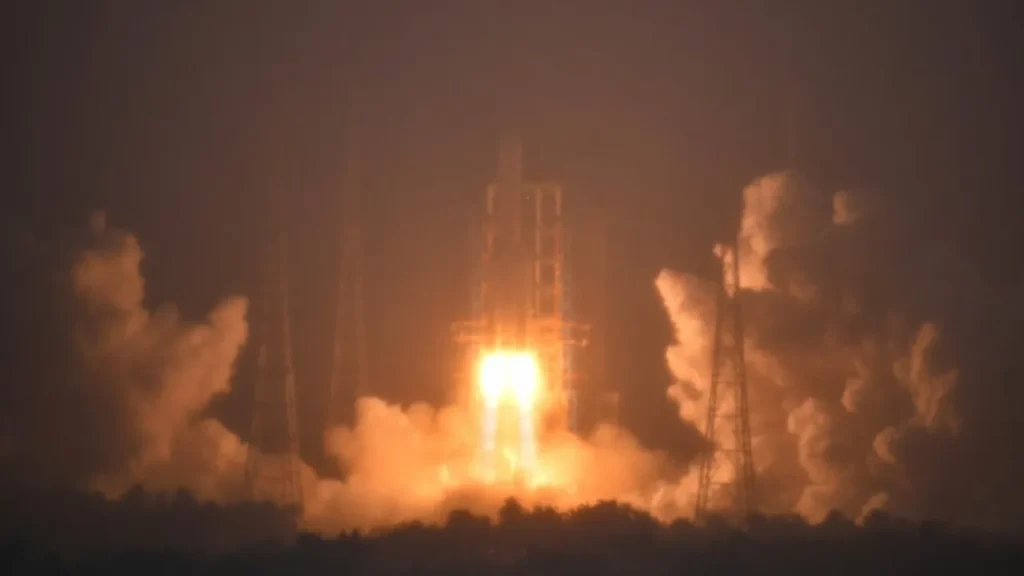A Chinese spacecraft accomplished a significant feat by successfully landing on the far side of the moon. This achievement, occurring on Sunday, underscores China’s notable progress in the contemporary space race, particularly against the United States.

Named after the Chinese mythical moon goddess Chang’e, the lunar probe, Chang’e-6, touched down in the South Pole-Aitken Basin, a substantial crater, around 6:30 a.m. Beijing time. The primary objective of this mission is to gather rock and soil samples from the surface, aiming to offer valuable insights into the geological composition of the comparatively unexplored far side of the moon when compared to the near side.
The China National Space Administration emphasized the complexity of the mission, highlighting its engineering innovations, high risks, and considerable challenges. The payloads carried by the Chang’e-6 lander are expected to execute scientific exploration tasks as planned.
Utilizing a small robotic shovel and drill, the probe will collect approximately four pounds of surface material. Subsequently, this material will be launched into lunar orbit using a small rocket booster and retrieved by an orbiting spacecraft.
China’s Chang’e-6 marks the second successful probe landing on the far side of the moon, a feat unmatched by any other nation. The difficulties associated with missions to the moon’s far side, such as communication obstacles and deep crater formations, pose significant challenges.
Having launched early last month, the mission’s duration is expected to extend for roughly another month. Notably, two other spacecraft have reached the moon this year, one from Japan and the other from the U.S. startup Intuitive Machines.
Chang’e-6 represents China’s sixth lunar exploration endeavor, demonstrating its substantial investment in space exploration. Additionally, China is actively engaged in space station operations, running its crewed space station as a competitor to the International Space Station. The country has also announced plans to land astronauts on the moon by 2030, aiming to become the second nation to achieve this milestone after the U.S.
While no human has set foot on the moon since 1972, NASA plans to return by 2026 at the earliest, with the American-led Artemis missions receiving significant support from private space companies and partnering with various international space agencies.
Boeing’s Starliner program, a significant venture into private spaceflight, has faced numerous delays in its attempts to launch its first craft this month.


